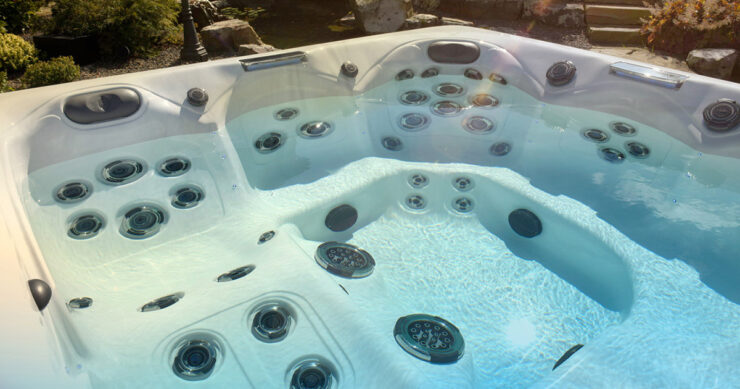A sanitizer, by definition, is a product used to get rid of pathogens like bacteria. When it comes to a hot tub, a sanitizer does just that. It eliminates bacteria, algae and other contaminants from your water so that you can safely enjoy your spa.
Spa owners do have a choice when it comes to sanitizers but Master Spas recommends using sodium di-chlor granules. These chlorine granules are easy to add to your hot tub water and are effective at killing the things you do not want in your water.
But what happens when you can’t keep your chlorine in the proper range?
A Master Spas customer recently reached out, asking about how to increase the chlorine level in her swim spa.
“What can be done to make sure that our swim spa is safe to use? We have also noticed that the walls are slimy and the floors are slimy.”
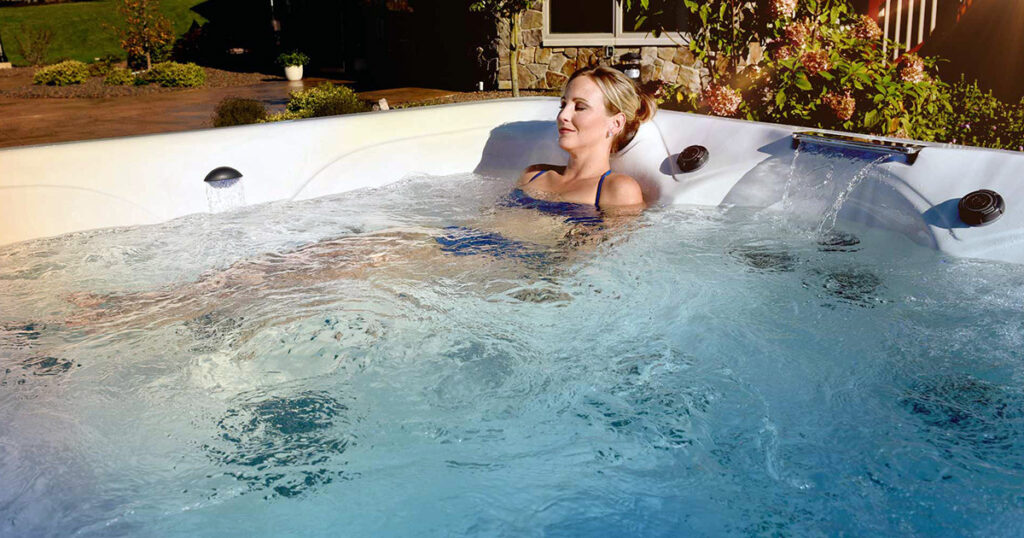
Water care basics
Routine water care is key to avoiding hot tub water problems. However, changes in how many people are using the spa, how long people are soaking, and other factors can affect the chemical levels of your spa.
Master Spas recommends testing the water before you use it to make sure that the water is safe to get in. People should not get in the spa if the chlorine levels are out of range. Your total chlorine should be between 2 and 4 ppm.
When you are finished enjoying the hot tub or swim spa, treat the water to maintain proper pH and chlorine levels. Oftentimes, you can add a sanitizer, like sodium di-chlor, and let the jets run for 15 minutes.
Related video: Chemicals for Hot Tub Start-Up
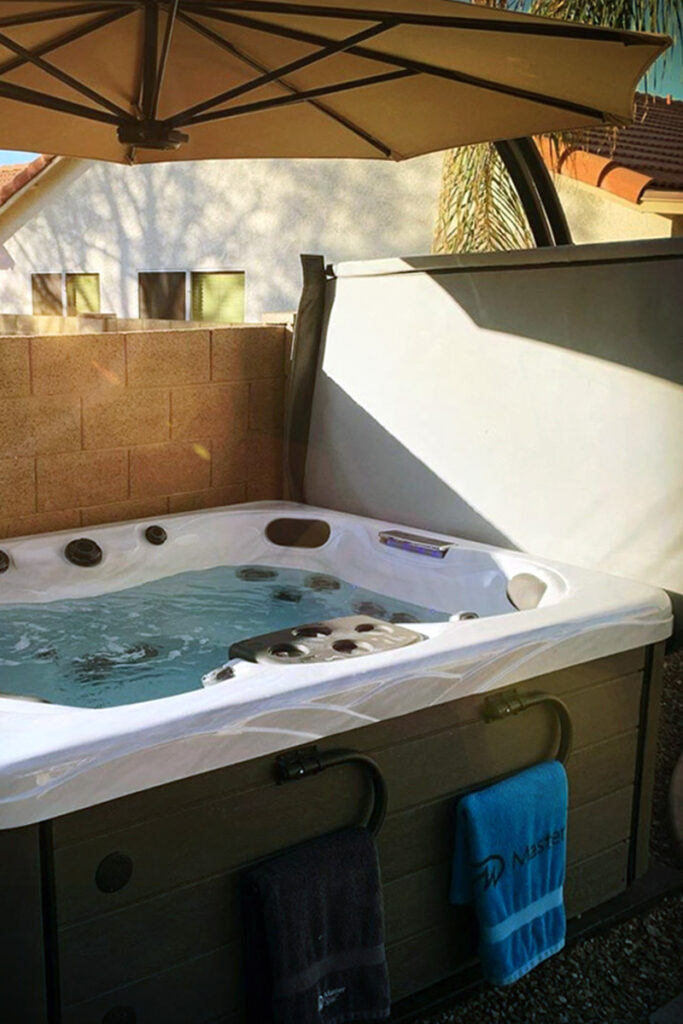
Increase chlorine level in hot tub
It can be frustrating to treat your swim spa or hot tub water only to see your chlorine levels keep dropping.
But before you add yet another capful of chlorine to your hot tub, be sure to take measures to target the underlying cause. Biofilm, sunlight, and dirty water can render your sanitizer ineffective.
Shock your hot tub water
Shocking your spa water allows you to raise chlorine levels above the recommended amount for a brief period of time. By shocking the water, you remove organic compounds from the water, kill bacteria, remove bromamines or chloramines and reactivate the bromides in the spa for cleaner water. Master Spas recommends that swim spa and hot tub owners shock their water once a week, after a party, or when you are struggling to keep chlorine levels in the proper range.
Tackle biofilm
Have you noticed a film on the surface of your spa? Do the spa pillows feel slimy? Swim spa and hot tub owners who are struggling to keep the chlorine levels up might have an issue with biofilm. Biofilm is caused by bacteria or microorganisms that stick themselves to a surface that is in contact with water. Resistant to chlorine, biofilm will cause the chlorine to “disappear” from your hot tub water. Why? The chlorine is continuously working to get rid of the biofilm.
Biofilm can be found on the hot tub shell but it can also build up in the plumbing of your spa. If you suspect that biofilm is why you can’t increase the chlorine levels of your hot tub, you should use an enzyme product. The enzyme product helps remove contaminants and build-up from your hot tub. Be sure to follow the manufacturer’s directions to get the most out of the product.
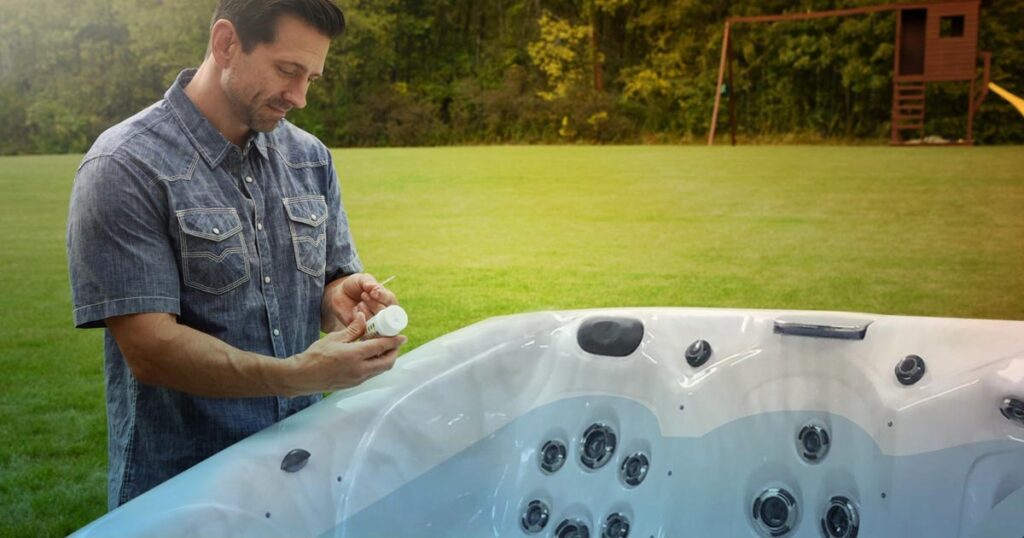
Add some shade
On a crisp fall day, the sunshine might feel nice while you are soaking in your hot tub. But the UV rays in that sunshine can cause the chlorine levels of your hot tub to drop more quickly.
Hot tub owners who are having a party during the day or have their spa in a place that gets a lot of direct sunlight should be mindful.
Consider adding an offset umbrella or sunshade, helping filter the sun. It’s also important to keep your hot tub cover securely latched when it’s not in use. Master Spas manufactures its hot tub covers from marine-grade, weather-resistant vinyl so that you can protect your spa.
Related: Download our Backyard Planning Guide for hot tub inspiration
Lower the water temperature
Temperature can affect the effectiveness of the chlorine. If you are keeping your water temperature above 100 degrees when you are not using your hot tub, the chlorine can evaporate more quickly. Consider lowering the temperature of your hot tub when not in use. (Swim spa owners should typically keep their temperature below 100 degrees for safe use.) Not only will it help you maintain water chemistry but it might lower your energy usage, too. If you want the water to be at the perfect temperature when you hop in, consider adding the WiFi module. Via the Balboa app, you can control the operations of your hot tub from the convenience of your phone. WiFi is a dealer-installed option available for select Master Spas models.
Balance chemicals and rinse filter
Your sanitizer will be most effective when your spa chemicals are balanced and the filter is clean. If you are struggling to keep your chlorine levels from dropping, it’s important to make sure pH and total alkalinity are in proper range. Also, check your filter. It should be rinsed every 30 days but if you have been using your hot tub more than usual, it might need to be cleaned sooner.
Hot Tub Cheat Sheet: Chlorine
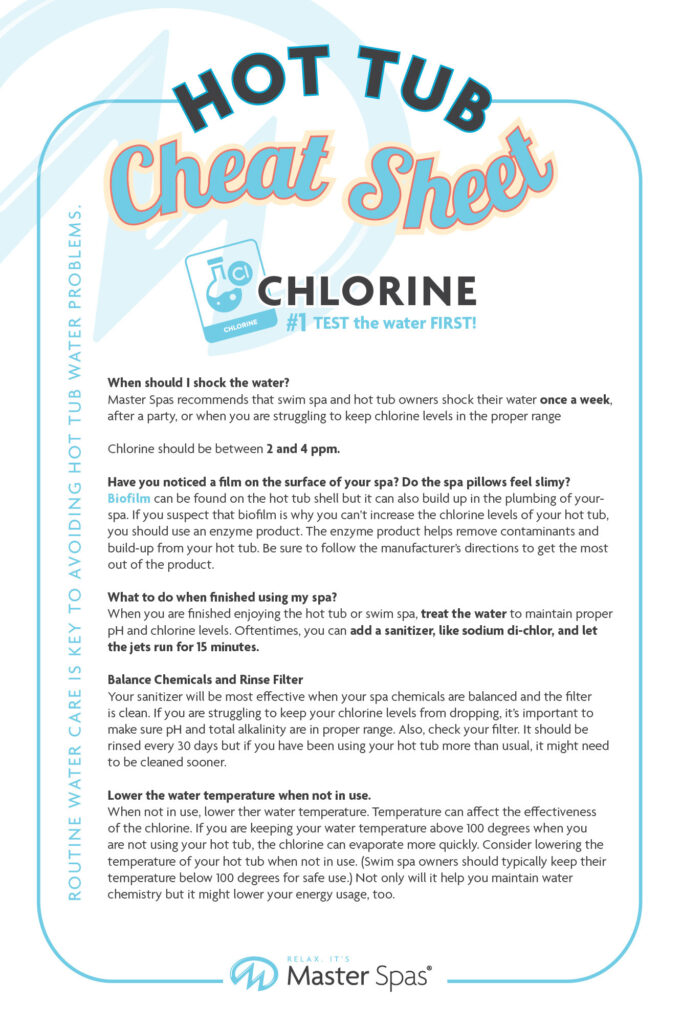
Fewer hot tub chemicals, more enjoyment
Hot tubs take chemicals like chlorine to keep it clean and safe for soaking. However, with a quality filtration system, you can keep your water clean with fewer chemicals. Learn more about how you can use fewer chemicals, including chlorine, with EcoPur. Or, contact your local Master Spas retailer to learn more about spa ownership. Wondering how much a Master Spas costs? You can request a quote here.


